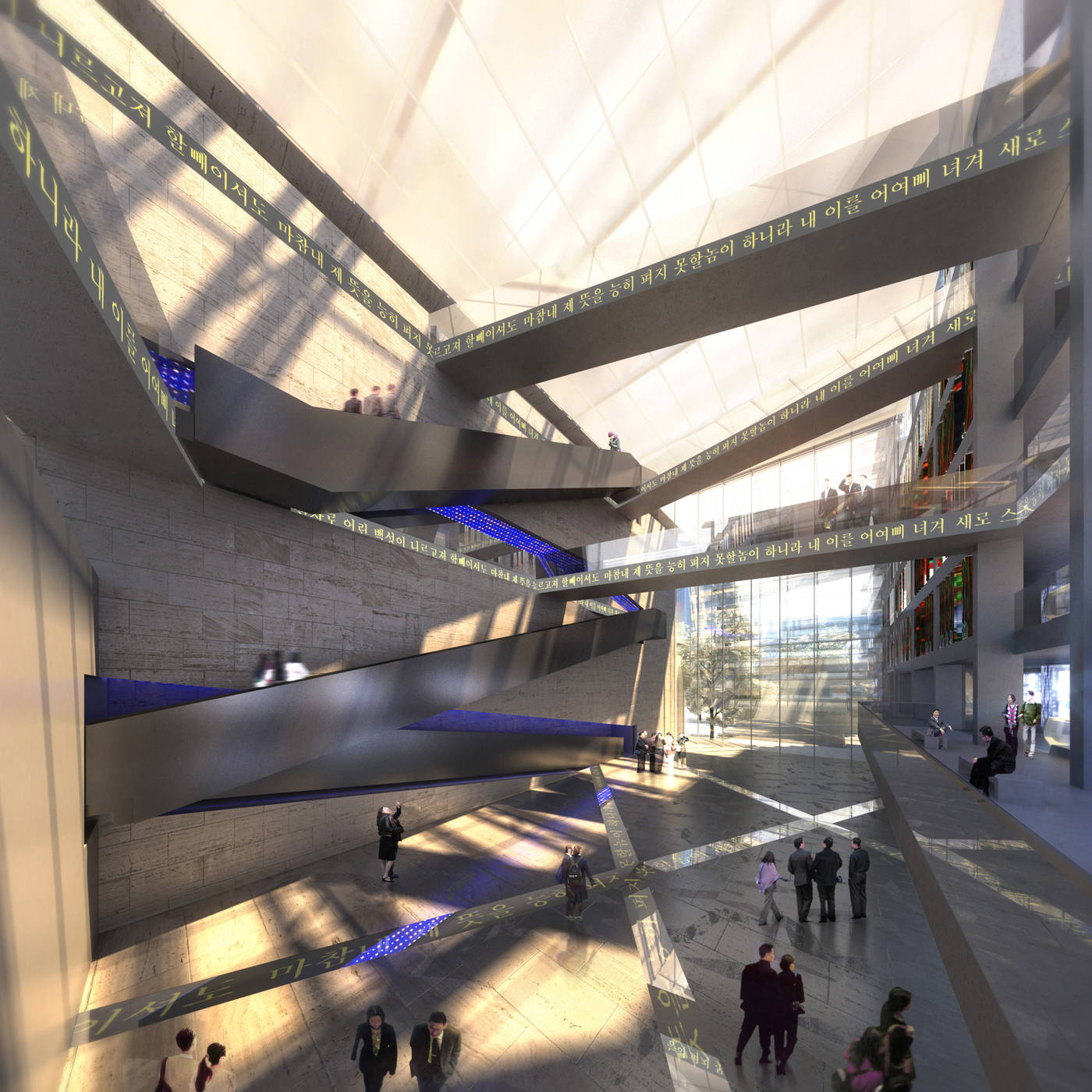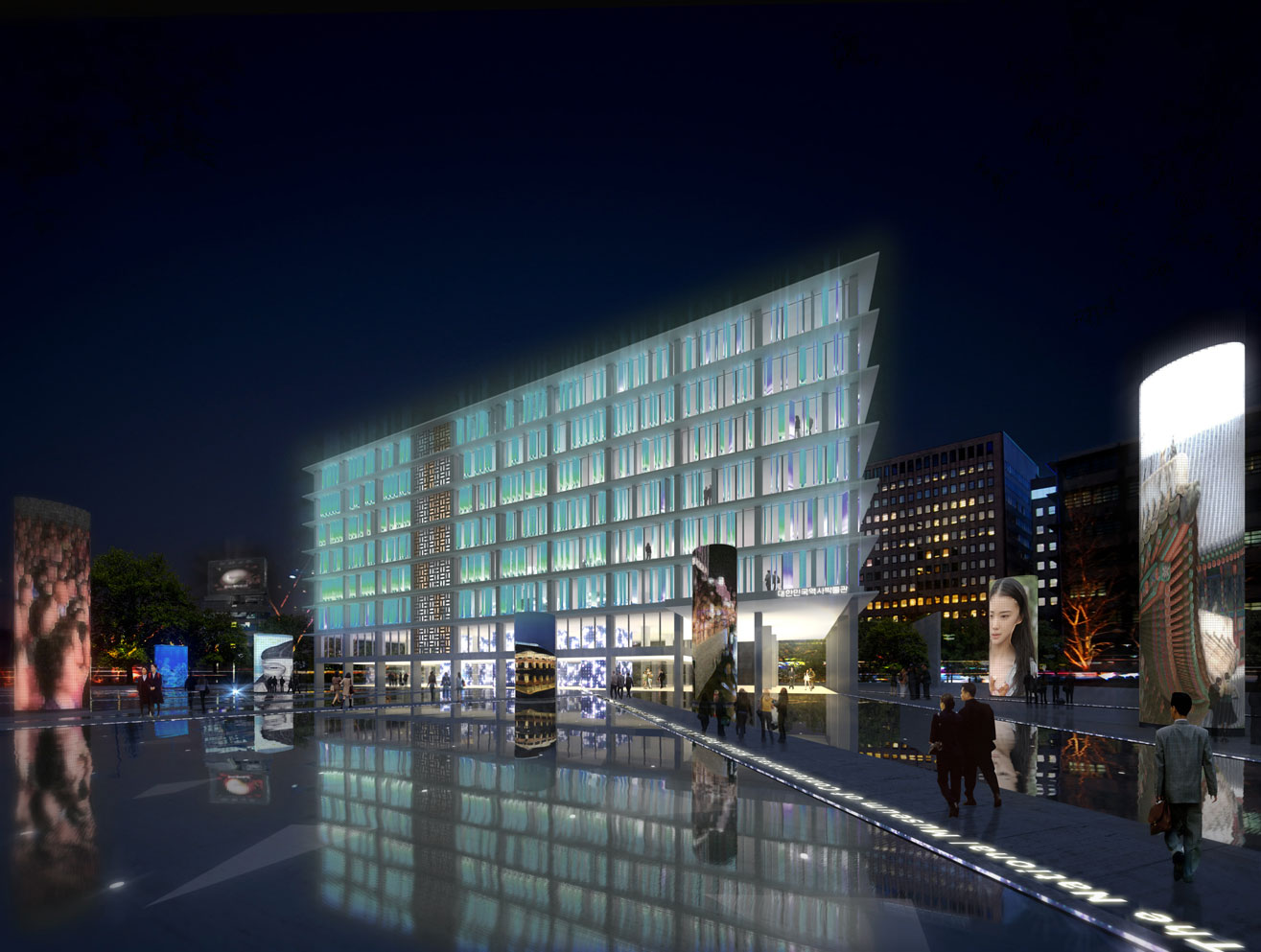

The GDS design for the new Republic of Korea Museum of History seeks not only to house the collective narrative and archive of historic documents from the past, but also to transform the building into an instrument that actively and dynamically records and reflects the ongoing historic narrative, as it emerges real-time in today’s world.
This critical narrative will be delivered through the use of state-of-the-art technology that allows visitors to contribute their own history to the collective archives. There will be a number of electronic ‘story collectors’ located around the museum that allow people to contribute their own histories using cell phones, recorded audio, video and touch pad technologies. Located both on-site and off-site, the accumulative data will be processed and broadcast as a key exhibit of the museum. This will include the opportunity for Koreans travelling abroad to submit their stories via the Internet, MMS and SMS, and allow visitors at the museum and in the Gwanghwamun Plaza to physically record their history in video booths, on touch pads and using their cell phones. A large-scale LED broadcast will occur on the main façade at the “Plaza of Contemporary History” located at the main reflecting pool at the museum’s entrance. Visitors are encouraged to talk to the building through texting technology, and in turn the building filters key words and phrases and responds to the visitor, establishing a real time “dialogue or conversation” on history. Individual story lines are recorded in streaming LED text strips that move towards the building, representing the flow of knowledge toward the museum, to be recorded for future generations… The water feature located below the energy-efficient LED broadcast board “reflects” the real-time narratives in a manner that mimics our own reflective thinking on history and provides a dynamic lighting system for the museum, drawing viewers in to participate in the reading and writing of their own history…

